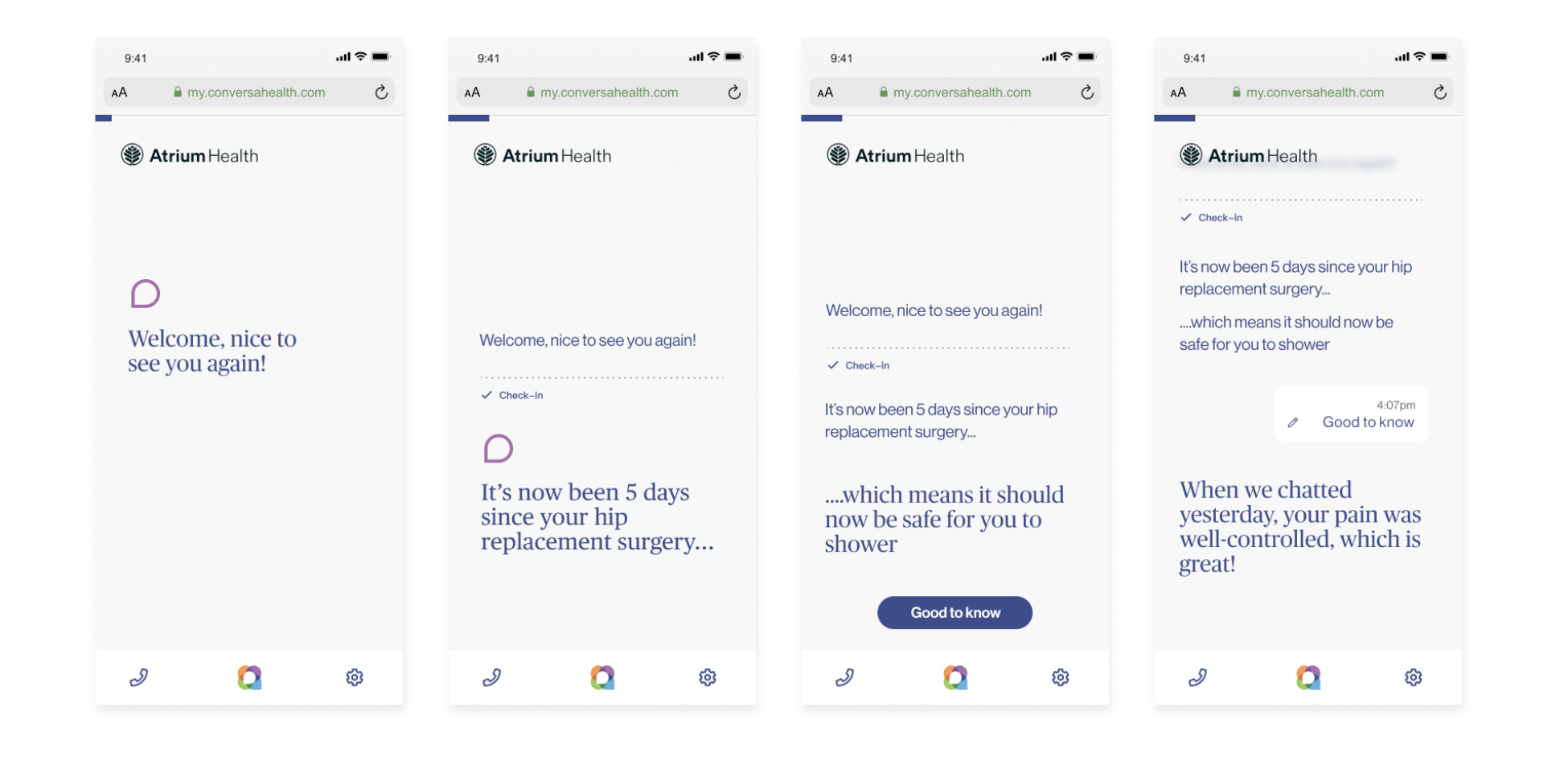
By
McKayl Barrows
Patient expectations in a post-covid era
It’s no secret that the pandemic changed the landscape of healthcare and the way practitioners and customers provide and receive care. According to a study from McKinsey & Company, telehealth usage has steadied at 38X higher than pre-pandemic, and 54% of providers added virtual visit capabilities in the last year.
CVS 2022 Health Care Insights Study reports that: “Patients value deeper and more meaningful relationships with their primary care physicians (PCPs) and other providers, and are finding that new virtual care options are filling in gaps and making it easier to achieve successful relationships with their PCPs.
But in addition to the option for telehealth, what else do consumers want? The report above found customers are looking for:
- Convenience
- Experiences tailored to their unique needs
- Instant support
- Reminders for upcoming appointments
To provide exceptional care and meet customer needs, providers must find cost-effective, efficient ways to keep up with this demand. With a customer-led approach, user research, and the help of automation, providers can save money, prioritize resources, increase customer satisfaction and retain happy customers. Here’s how.
What role does automation play in the pursuit of better healthcare?
Here’s how we see automation and AI support consumers and providers.
1. Convenient and efficient care
CVS found that 92% say convenience is important when choosing their primary care provider. So what does convenience look like in healthcare? For some, it's access to virtual and telehealth services; for others, it’s being able to talk to their provider promptly.
Anything we can do digitally — speaking to a provider, self-diagnosis, symptom assessing — can all be aided by AI and lead to more convenient care.
Take triaging, for example. When a patient has a health-related question, a chatbot can direct them to the best solution by recognizing which problems would benefit from an in-person visit. Alternatively, automation can provide useful paths and resources for self-service. This gives consumers a chance to be proactive about their care and reduces the strain on practitioners.
Conversa, for example, came to us to create a digital experience that simplifies triaging and aftercare follow-up with AI. Conversa’s customers can now take advantage of branded chatbots and intelligent automated responses to quickly get the help they need.

2. A personalized experience
One of the challenges we often see in healthcare is that you’re trying to build a healthcare design experience that works for everyone: older people, younger people, healthy people, sick people, individuals, and families.
Humans aren’t one-size-fits-all, so our healthcare shouldn’t be either. CVS found that 85% of consumers find personalized care to be necessary. One of the best examples of personalization is our work with Kaiser Permanente.
Kaiser’s “Health Feed” pulls together all of the most recent and relevant information for a patient: payment reminders, a prescription that needs refilling, lab results, or a new message from your doctor. The health feed works if you’re an individual, family, or caregiver. The feed’s job is to find the pieces of information you need and put them right on the front page, where they’re easily accessed and addressed without ever leaving the home page.
Related: How Blink UX helped Kaiser Permanente reimagine the healthcare experience
3. Priority notifications and appointment reminders
We can also use automation to deploy relevant patient reminders, which is an important feature considering 83% of consumers agree that they’d like healthcare providers to remind them about appointments, prescription refills, and routine checkups.
Because UCSF Health is a tertiary care provider, UCSF patients often receive care from multiple providers and departments. By taking a conversational approach to their patient experience, we can combine communications from all providers and use priority notifications to ensure patients know what's next and where to be at all times.

How does investing in AI and automation help providers?
With AI and automation, healthcare providers ensure convenient, efficient, and personalized customer experiences (CX). In addition to providing better CX, here are the top ways providers can benefit from investing in automation and AI:
1. You’ll likely reduce costs.
Paying practitioners to talk to each patient can be timely and expensive. Finding alternatives for people to help themselves other than talking to a human can have a significant impact on reducing operating costs.
2. You’ll find innovative ways to put your resources and workforce where needed.
If practitioners no longer have to screen incoming calls, schedule appointments, or manually remind patients of their next appointment, they’ll have time to focus on other work areas.
3. You’ll improve forecasting.
Broadly, companies can use AI to look at trends across populations and adjust resources as needed.
On a smaller scale, providers can look at someone's electronic medical record and pattern match to say, “Hey, this person is likely to develop XYZ in the next five years based on their current history and genetics.”
AI-predicting and preventative medicine is going to be much more cost-efficient than the weight of trying to cure something afterward. So anything we can do to encourage people to take better care of themselves in the first place can benefit consumers and providers.
4. You’re more likely to retain customers.
In short, meeting customer needs for reliable, convenient care improves customer experience. Good customer experiences drive loyalty, which ultimately drives customer retention.
Best practices for adding automation to the customer experience
AI and automation best practices largely depend on how you’re using them. Deciding where to put your money and effort comes down to knowing what your patients need, which comes down to conducting research and talking to customers.
“It starts with gaining a deeper knowledge of the target audience through data-led, qualitative research into behaviors and common patterns, to zoom into what really motivates customers and how they engage with products. [...] A customer-centric approach opens up avenues for the creation of new products and services, revenue streams, and efficiencies,” — Karen Clark Cole, Blink CEO
After understanding your customers, it’s essential to lay the groundwork for great CX — experiences that are simple, seamless, and approachable.
We wrote an article that breaks down our advice for designing better conversational interfaces. but here are our top AI and automation tips at a glance:
- Be transparent with any recommendations on why you are making those recommendations.
- Personify your brand and use it to differentiate and build trust.
- Be transparent about privacy and where or where not consumers' data is going.
- Always be clear about whether someone is talking to a human or automation.
- Simplify language by removing technical and regulatory jargon when possible to help make this complex industry and stressful interactions more empowering for patients.
Finding the right AI solution with Blink
Customer expectations are constantly changing, and healthcare is no exception. Since 2001, our teams have used technologies such as artificial intelligence, machine learning, and automation to create approachable healthcare experiences that match customers' ever-changing needs.
Our evidence-based approach turns user research into insights to ensure that we design experiences that put your patients first.
Contact us today to learn more about how we can work together to create the right automated solution for your organization!



